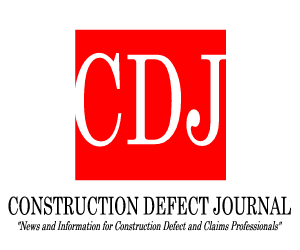
The Michigan Supreme Court overturned a longstanding precedent that CGL insurers have historically relied upon to deny insurance coverage for claims involving pre-1986 CGL policies.
On June 29, 2020, the Michigan Supreme Court overturned a longstanding precedent that commercial general liability (“CGL”) insurers have historically relied upon to deny insurance coverage for claims involving pre-1986 CGL policies. See Hawkeye-Security Ins. Co. v. Vector Const. Co., 185 Mich. App. 369, 372, 460 N.W.2d 329, 331 (1990). In its recent ruling, the state Supreme Court unanimously agreed that an Insurance Services Office, Inc. (“ISO”) 1986 standard CGL policy, which is sold to construction contractors across the United States, provides coverage for property damage to a policyholder’s work product that resulted from a subcontractor’s unintended faulty workmanship. Skanska USA Bldg. Inc. v. M.A.P. Mech. Contractors, Inc., No. 159510, 2020 WL 3527909 (Mich. June 29, 2020).
In 2008, Skanska USA Building, Inc., the construction manager on a renovation project for Mid-Michigan Medical Center, signed a subcontract with defendant M.A.P. Mechanical Contractors (“MAP”) to install a new heating and cooling (“HVAC”) system. Id. During the renovation, MAP installed some of the expansion joints in the new HVAC system backwards. Id. The defective installation caused approximately $1.4 million in property damage to concrete, steel and the heating system, which Skanska discovered nearly two years after MAP completed the project. Id. After performing the repairs and replacing the damaged property, Skanska sought repayment for the repair costs from MAP and also submitted a claim to Amerisure seeking coverage as an insured under the CGL policy. Id. When Amerisure rejected Skanska’s claim, Skanska sued both parties. Id. Amerisure relied on the holding in Hawkeye and argued that MAP’s defective workmanship was not a covered “occurrence” under the CGL policy, which the policy defined as an accident. Id. at *4.
The Michigan Court of Appeals ignored the express language contained in the CGL policy and applied a prior appellate court precedent from Hawkeye, finding that MAP’s faulty work was not an “occurrence” and thus, did not trigger CGL coverage. Id. at *4. The Court of Appeals further reasoned that Skanska was an Amerisure policyholder and that the only property damage was to Skanska’s own work, which was not covered under the CGL policy. Id. at *5.
In a landmark decision, the Michigan Supreme Court reversed, holding unanimously that the Court of Appeals incorrectly applied the holding of Hawkeye because it failed to consider the impact of the 1986 revisions to standard CGL insurance policies. Id. at *10. Chief Justice Bridget M. McCormack explained that the Hawkeye decision rested on the 1973 version of the ISO form insurance policy, which specifically excluded certain business risks from coverage such as property damage to a policyholder’s own work. Id. The Supreme Court agreed that while Hawkeye was correctly decided, it did not apply here because the 1986 revised ISO policy includes an exception for property damage caused by a subcontractor’s unintentional faulty work. Id.
The Supreme Court said that under the plain reading of the current CGL policy language, an “accident” could include a subcontractor’s unintentional defective work that damaged a policyholder’s work product and thus, may qualify as an “occurrence” covered under the policy. Id. at *9. The Supreme Court defined an “accident” (which was not defined in the Amerisure policy) as “an undefined contingency, a casualty, a happening by chance, something out of the usual course of things, unusual, fortuitous, not anticipated, and not naturally to be expected.” Id. at *5; see Allstate Ins. Co. v. McCarn, 466 Mich. 277, 281, 645 N.W.2d 20, 23 (2002). The Supreme Court noted that there was no evidence suggesting that MAP purposefully installed the expansion joints backwards, nor was there evidence indicating that the parties affected by MAP’s negligence anticipated, foresaw, or expected MAP’s defective installation or property damage. Skanska, 2020 WL 3527909, at *4. Therefore, the Supreme Court concluded that an “occurrence” may have happened, which would trigger coverage under the CGL policy. Id. at *10.
Although this landmark decision changes Michigan law, the decision is limited to cases involving the 1986 ISO policy language revisions to CGL insurance policies. Id. The Supreme Court's decision does not overturn Hawkeye, but rather limits Hawkeye’s authority to cases involving the 1973 ISO form. Id.
Gabrielle Szlachta-McGinn was a summer associate at Newmeyer Dillion as part of the firm's 2020 summer class. You may learn more about Newmeyer Dillion's construction litigation services and find the group's key contacts at https://www.newmeyerdillion.com/construction-litigation/.




